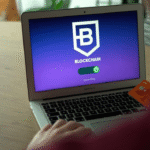
The integration of real-world assets (RWAs) into blockchain ecosystems has gained significant momentum, with financial giants like BlackRock pioneering this innovative approach. Tokenizing RWAs involves converting physical assets such as real estate, commodities, and even money market funds into digital tokens.
This process enhances the efficiency of issuing, managing, and distributing these assets compared to traditional methods. For instance, BlackRock’s USD Institutional Digital Liquidity Fund (BUIDL) experienced a 5.93% increase in net inflows, reaching $483 million in assets under management by June 2024.
The Utility and Efficiency of Tokenized Assets
One of the primary advantages of tokenizing RWAs is the added utility and cost savings. By leveraging blockchain technology, these digital assets offer increased transparency and efficiency. For example, BlackRock’s BUIDL token, issued on the Ethereum blockchain via Securitize, has been used as collateral for securing loans and collateralizing derivatives positions on prime brokerage FalconX.
Additionally, Broadridge reported saving $1 million for every 100,000 repo transactions, highlighting the potential cost savings through blockchain integration.
Diversifying Investment Opportunities in Digital Finance
The growing popularity of RWA tokenization is reflected in the diverse range of assets being digitized. These include on-chain equity, fund LP units, real estate, and debt. By converting these physical assets into digital tokens, investors can access new opportunities that were previously illiquid or inaccessible. This process enhances portfolio diversification and democratizes investment access.
According to Security Token Market’s RWA Securities Market Update, a hypothetical security token bundle of all tracked RWAs significantly outperformed the CoinDesk 20 Index, closing June 2024 at +13.73% compared to the index’s -11.74%. This performance disparity underscores the resilience of tokenized RWAs against the backdrop of crypto market volatility, driven by macroeconomic factors and negative sentiment impacting cryptocurrencies.
Tokenized assets provide numerous benefits, including increased liquidity, fractional ownership, and enhanced transparency. For example, tokenizing real estate allows investors to buy and sell fractions of properties, making real estate investment more accessible. Similarly, tokenized debt and fund LP units enable more efficient capital management and allocation.

Moreover, integrating smart contracts further streamlines these processes by automating transactions and ensuring compliance with regulatory requirements. This technological advancement reduces the need for intermediaries, lowers transaction costs, and accelerates settlement times. As a result, both issuers and investors can benefit from a more efficient and secure investment ecosystem.
The continuous development and adoption of tokenized assets highlight a shift towards a more inclusive and versatile financial system. As more assets become tokenized, investors can look forward to a broader range of investment options, greater transparency, and improved market efficiency. This transformation is set to redefine traditional finance, offering new opportunities for growth and innovation in the digital age.
For those interested in learning more about real-world asset tokenization, the digital asset specialists at Kenson Investments provide comprehensive guidance. Contact Kenson Investments today to discover how they can help you navigate and capitalize on the evolving digital asset landscape.
Disclaimer: The information provided on this page is for educational and informational purposes only and should not be construed as financial advice. Cryptocurrency assets involve inherent risks, and past performance is not indicative of future results. Always conduct thorough research and consult with a qualified financial advisor before making investment decisions.














